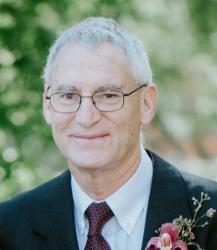This is an excerpt from a book by Matt Sieger, The God Squad: The Born-Again San Francisco Giants of 1978.
The second version of the God Squad included five pitchers: Atlee Hammaker, a Giant from 1982-1990; Scott Garrelts (1982–1991); Dave Dravecky (1987–1989); Jeff Brantley (1988–1993); and Craig Lefferts (1987–1989). Outfielders Brett Butler (1988–1990), Kevin Bass (1990–92), and Candy Maldonado (1986–1989), catcher Gary Carter (1990), and utility men Dave Anderson (1990–91) and Greg Litton (1989–92) were also born-again Giants. Plus, Houston traded Bob Knepper back to the Giants in 1989. In September 1989, the Santa Rosa Press Democrat reported that as many as fifteen Giants out of the twenty-four-man base roster attended chapel services.
A year earlier, misunderstanding had grown between the God Squadders and some teammates, fed, partly, by the press.
Dave Dravecky: The ‘God Squad‘ term became a pejorative after a while. It certainly made life difficult for us in the clubhouse as reporters constantly probed other ballplayers about their feelings regarding the ‘religious’ pitchers on their team. Scott, Jeff, Atlee, and I read anonymous quotes from our teammates questioning whether we had what it took to be winners. Some felt we were too passive or weak because we shrugged off defeat, thinking it must have been ‘God’s will.’ That was a bunch of baloney because I know I fought with everything I had while on the mound…. If the media has a weakness, it’s writing from the ‘template.’ The template for Christian ballplayers is that we are too nice to be winners, lack intensity and determination at crunch time, and that when we lose, we shrug our shoulders and mumble, ‘Praise the Lord.’
Dravecky received support from his manager, Roger Craig. After the southpaw spun a two-hit complete game shutout against the Cardinals in Game 2 of the 1987 National League Championship Series, he was led to a media room next to the locker room, where Craig was answering questions. When the manager looked up and saw Dravecky, he said, “They say Christians don’t have any guts. Well, this guy’s a Christian and he’s not afraid of anything.”
Dravecky demonstrated courage in a remarkable chain of events that began in 1988. In October, he had surgery to remove a cancerous tumor in his pitching arm. The surgeon removed half of the deltoid muscle and froze the humerus bone in an attempt to eliminate all the cancerous cells. In what many called a miraculous return to baseball, Dravecky pitched eight innings in a 4–3 victory over the Cincinnati Reds on August 10, 1989, at Candlestick Park in front of 34,810 roaring fans.
Writing in 1999 for the San Francisco Chronicle, Henry Schulman recalled that game played ten years earlier. “Dravecky did not exactly fit the San Francisco mold. His politics were to the right of Ronald Reagan’s, and he was a born-again Christian. But … when Dravecky returned to the mound at Candlestick Park for the first time after battling cancer in his arm for more than a year, everyone—politics and religion not withstanding—felt a kinship with the man. On a beautiful afternoon, with no wisp of wind, the applause began as soon as Dravecky stepped out of the tunnel to start his pregame warmups. The applause turned into an ovation, one of many he got that day as he not only pitched but also won, beating the Cincinnati Reds. There were lumps in tens of thousands of throats.”
Five days later, Dravecky felt a tingling sensation in his arm while pitching in Montreal in the fifth inning. In the next inning, on his first pitch to Tim Raines, Dravecky’s humerus bone shattered, and the sound was heard throughout the stadium as Dravecky collapsed on the mound.

Dave Dravecky (photo courtesy SF Giants)
San Francisco Chronicle sportswriter Bruce Jenkins wrote about Dravecky’s equanimity when the pitcher met with the Bay Area press the morning after his injury: “He had the same calm, relaxed look on his face, the same glow in his eye, the same attitude that said, ‘My life is going just great.’ That’s the Dravecky we’ve always known and the one we’ve got today. If the open preachings of Christian athletes put you off, then maybe his story is not for you. But Dravecky’s beliefs are at the heart of his strength. That became abundantly clear in the wake of an injury that sent shock waves through the baseball world.”
Jenkins noted how Dravecky’s born-again teammates rallied around him when the pitcher returned to his hotel room the night of his injury: “Within minutes, his best friends on the team were there: Garrelts, Bob Knepper, Jeff Brantley, and Greg Litton. The five who strongly believe in Christianity stayed in Dravecky’s room from midnight until 5 a.m., talking things over.”
Dravecky’s faith and courage impacted his other Giants teammates. Although he felt there was division between Christians and non-Christians in 1988, he said that was not a problem on the 1989 team. “I think there’s camaraderie on this club,” he said near the close of the 1989 regular season. “I also think there’s a genuine respect from the players on the team that might not choose to attend (chapel), and that’s important.”
Dravecky’s cancer returned, and his left arm and shoulder had to be amputated in June 1991. On July 16, the Associated Press reported on the first time Dravecky spoke publicly after the operation.
Looking fit and rested, Dravecky said, “There are adjustments that I have to make, but there’s nothing out there that I don’t want to do.”Although his future won’t include baseball, Dravecky said he will swim, play golf and tennis, and engage in other sports he could not enjoy in the past because of his baseball contract. He also has a full schedule of speaking engagements.”














